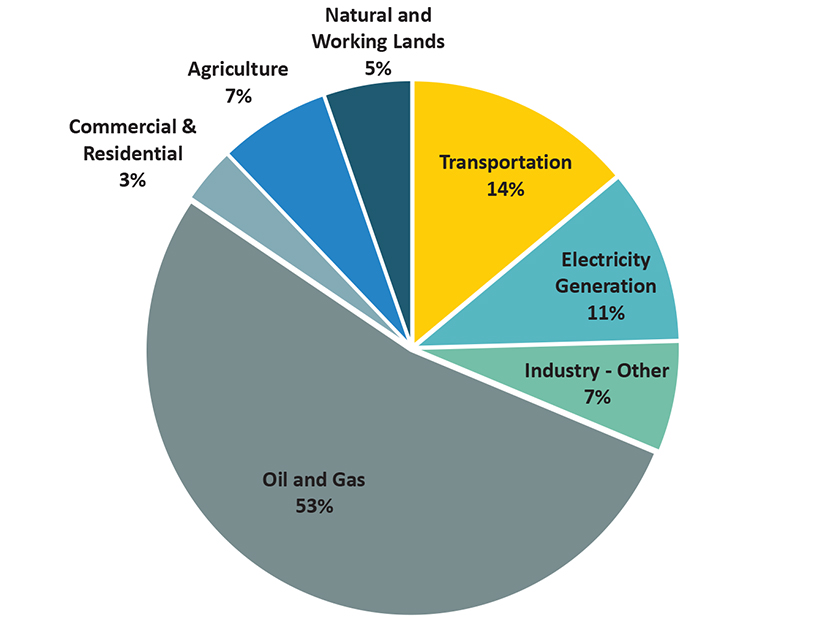
New Mexico is heading toward adoption of California clean car standards, but environmental groups say officials are moving too slowly on approving the standards, which under the state’s current timeline could be adopted by October 2022.
The clean car standards are intended to reduce emissions from new passenger vehicles and increase the availability of zero-emission cars. New Mexico’s climate strategy, updated last year, called for public meetings on the standards starting in spring 2021 and an Environmental Improvement Board hearing later this year.
But a variety of factors have pushed back the rulemaking, according to Sandra Ely, director of the Environmental Protection Division within the New Mexico Environment Department.
One of the main factors was the COVID-19 pandemic, Ely said during a public kick-off meeting for Clean Cars New Mexico on July 21. The Environmental Protection Division includes the Occupational Safety and Health Bureau, which last year was “100% COVID all the time,” Ely said.
In addition, Ely said, the division has been focused on the proposed ozone precursor rule, which would apply to the oil and gas sector. The sector accounts for 53% of the state’s greenhouse gas emissions, while the transportation sector makes up 14%.
The ozone precursor rule addresses volatile organic compounds and nitrogen oxides, two gases that combine to create ground-level ozone. It’s expected to go to the Environmental Improvement Board next month.
“Clean cars matter,” Ely said. “But this small agency, having taken on COVID, having [moved] forward on the ozone precursor rule, cannot move at rapid speed on this, and get it done quickly, get it done efficiently, and get it done legally.”
A timeline presented during the workshop indicated that informational sessions on Clean Cars New Mexico would continue through October, with a rulemaking petition submitted in December. A board hearing on the regulations could be scheduled for May 2022, and the rules finalized by October 2022.
The federal Clean Air Act requires two full model years between finalization and enforcement of the clean cars rule.
Two-Pronged Program
The clean car standards consist of two programs. A low-emission vehicle (LEV) program sets emission standards for new light- and medium-duty vehicles, such as passenger cars, SUVs and pickup trucks. A zero-emission vehicle (ZEV) program requires car manufacturers to supply a certain number of zero-emission vehicles to dealers each year.
Under federal law, states can either follow federal vehicle-emission standards or adopt the more stringent California standards.
New Mexico adopted California’s clean car standards in 2007, but the standards were rolled back under Gov. Susana Martinez’s administration.
Environmental groups argue that because the rule would largely follow the California standard and the state already has experience with the clean car standards, adopting the standards should be fairly straightforward for New Mexico.
The groups petitioned the Environmental Improvement Board in June to establish a schedule for considering the standards that would allow for adoption of final regulations by the end of this year. That way, the rules would apply to vehicles starting with model year 2025. Cars of a particular model year are typically released during the previous calendar year.
“However, if adopted in 2022, the standards would not take effect until model year 2026, substantially slowing progress towards the state’s goals of reducing air pollution and addressing the climate crisis,” the petition said.
The groups on the petition include the Center for Civic Policy, Conservation Voters New Mexico, Natural Resources Defense Council, Plug In America, Prosperity Works, Sierra Club, Southwest Energy Efficiency Project (SWEEP) and 350 New Mexico.
The EIB considered the petition during its July 23 meeting but rejected it. According to SWEEP, two of the seven board members, Barry Bitzer and Benjamin Duval, voted against the motion to reject the petition.
As of Monday, the Environment Department had not posted a recording of the EIB’s July 23 meeting. The department didn’t respond to several messages inquiring about the board’s action.
Tammy Fiebelkorn, New Mexico representative for SWEEP, told NetZero Insider that the organization is disappointed by the EIB decision but plans to work with the Environment Department to move the process forward as quickly as possible next year.
“These rules are imperative to reach our climate goals, so quick action is needed,” Fiebelkorn said.
Clean Cars in Other States
According to the Clean Cars New Mexico website, California’s LEV/ZEV regulations have been adopted in 14 states and Washington D.C.
Several other states, including Nevada and Washington, have begun the process to adopt the standards. (See Washington Moving to Adopt Calif. Vehicle Emission Rules; Nev. Program Seeks Calif. Standards for Vehicle Emissions.)
In Nevada, the clean cars regulation is scheduled to go to the state Environmental Commission on Sept. 1. The Nevada Division of Environmental Protection (NDEP) expects the rule to be finalized by the end of the year, taking effect beginning with model year 2025 vehicles.
Nevada’s proposed regulation would allow automakers to acquire and bank early ZEV credits for model year 2022, 2023 and 2024 ZEVs.
NDEP held its most recent public workshop on the regulation on July 28. More information on Clean Cars Nevada is here.
In New Mexico, the state Environment Department is coordinating with the Albuquerque-Bernalillo County Air Quality Control Board on the Clean Cars rulemaking process.
That’s because the city of Albuquerque has its own jurisdiction over air quality regulations. The Environmental Improvement Board regulations govern air quality in other, non-tribal areas of the state.


